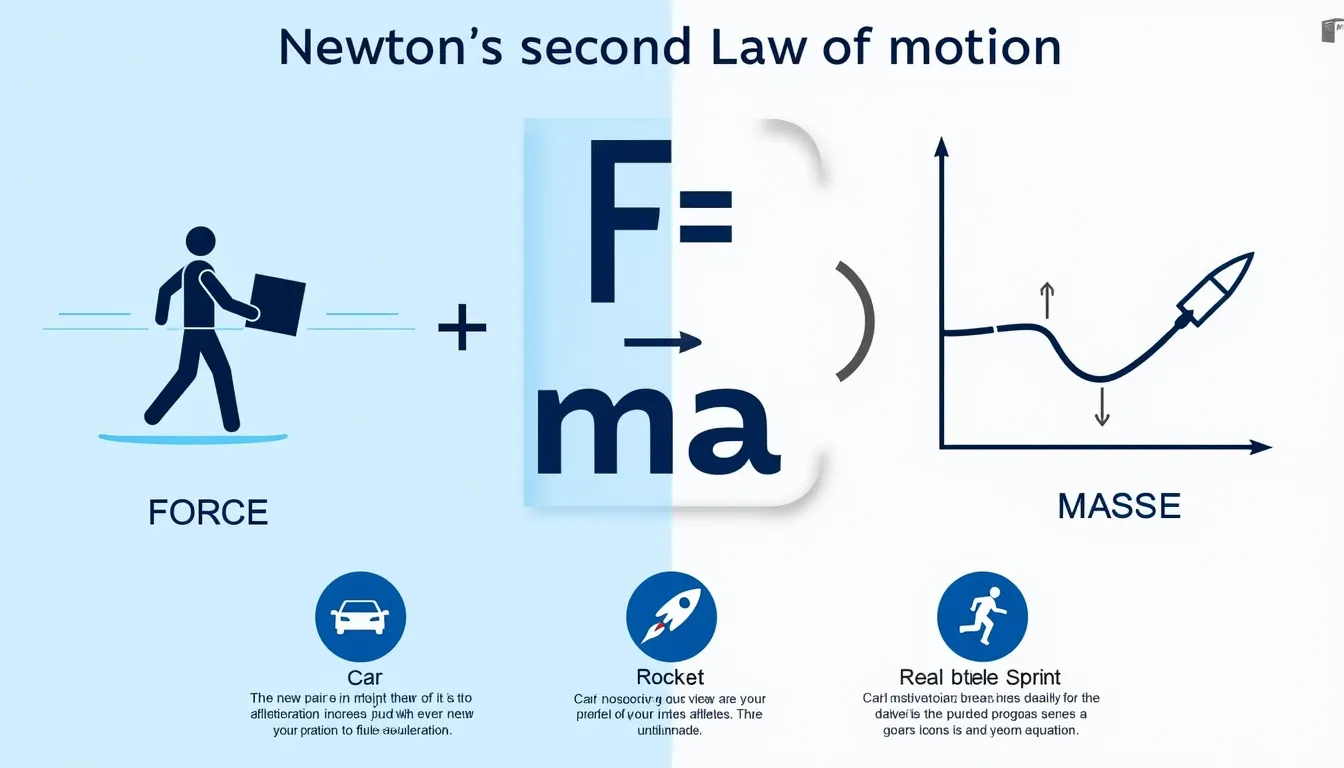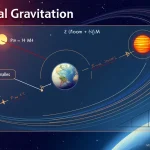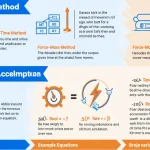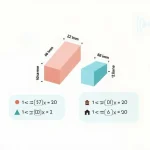Newton's Second Law Calculator
Is this tool helpful?
How to use the tool
- Mass (kg) – type a non-negative value. Try 12 kg or 1850 kg.
- Acceleration (m/s²) – enter any signed value. Sample: 2.2 m/s² or -1.7 m/s².
- Press Calculate Force; the tool multiplies mass and acceleration.
- Read the force in Newtons (N) with two-decimal precision.
Underlying formula
The calculator applies
$$F = m \, a$$
- F: force (N)
- m: mass (kg)
- a: acceleration (m/s²)
Example calculations
- Example A: 12 kg × 2.2 m/s² = 26.40 N
- Example B: 1850 kg × (-1.7 m/s²) = ‑3145.00 N
Quick-Facts
- Formula defined by ISO 80000-4, section 2.32 (ISO 80000-4, 2019)
- 1 N equals the force to accelerate 1 kg at 1 m/s² (BIPM SI Brochure, 2019)
- Standard gravity g = 9.80665 m/s² (NIST, 2023)
- Airbus A380 maximum take-off mass ≈ 575 000 kg (Airbus Data Sheet, 2022)
- Calculator outputs two-decimal rounding for readability (Tool Spec)
FAQ
What is Newton’s second law?
Newton’s second law states that force equals mass multiplied by acceleration, $$F = m a$$, establishing proportionality between these quantities (ISO 80000-4, 2019).
Why must mass be non-negative?
Negative mass lacks physical meaning in classical mechanics; enforcing non-negative values keeps results consistent with empirical observations (Halliday & Resnick, 2020).
Can I use scientific notation in the fields?
Yes. Typing 3.2e4 for 32 000 works because HTML number inputs accept exponential notation (WHATWG HTML Spec, 2023).
How accurate are the results?
The tool rounds to two decimals, producing ≤0.5 % error for inputs under 1 million; double-precision math ensures higher internal accuracy (IEEE 754, 2019).
When is negative acceleration useful?
Negative acceleration models braking or downward motion; it shows force acting opposite to velocity, clarifying dynamics during deceleration (Serway, 2021).
How do I convert Newtons to pound-force?
Divide Newtons by 4.44822; for example, 100 N ≈ 22.48 lbf (NIST Unit Converter, 2023).
Is the calculator valid at relativistic speeds?
No. Near-light-speed motion requires relativistic dynamics; classical $$F = m a$$ underestimates force by γ factor (Einstein, 1905).
How should I cite results in a report?
Write: “Force calculated with online Newton’s Second Law Calculator: F = 26.40 N, accessed [date].” Cite ISO 80000-4 for the formula.
Important Disclaimer
The calculations, results, and content provided by our tools are not guaranteed to be accurate, complete, or reliable. Users are responsible for verifying and interpreting the results. Our content and tools may contain errors, biases, or inconsistencies. Do not enter personal data, sensitive information, or personally identifiable information in our web forms or tools. Such data entry violates our terms of service and may result in unauthorized disclosure to third parties. We reserve the right to save inputs and outputs from our tools for the purposes of error debugging, bias identification, and performance improvement. External companies providing AI models used in our tools may also save and process data in accordance with their own policies. By using our tools, you consent to this data collection and processing. We reserve the right to limit the usage of our tools based on current usability factors.







